11 Ways to Get More Email Subscribers
Written by Brian Dean

In this post, I’m going to show you EXACTLY how to get more email subscribers in 2026.
In fact, the strategies in this post have helped me grow the Backlinko email list to 177,310 total subscribers.

So if you’re looking for effective strategies, you’ve come to the right place.
Let’s dive right in.
1. Create Hyper Specific Lead Magnets
It’s no secret that lead magnets are insanely effective.
That’s because lead magnets give someone a real, tangible reason to give you their email address and sign up for your list.

The only issue is:
Most people use super generic lead magnets.
In other words: they pitch the same lead magnet to every single person that visits their website.
#facepalm
Instead, you want to offer up lead magnets that are VERY closely related to what your visitor is reading about.
For example, let’s say you’re reading this post on my site about SEO.

Well, we used to offer you a PDF guide to SEO.

And when one of our visitors was reading about YouTube marketing, they saw an offer for a YouTube guide.

Or if someone just landed on one of our definitive guides, the lead magnet was actually a PDF version of that guide.

(It’s hard to get much more targeted than that.)
Needless to say, this type of targeted lead magnet works MUCH better than a generic pitch.
This leads us to…
2. Pitch Your Newsletter on Social Media
Needless to say, people that follow you on social media are SUPER likely to sign up to your email list.
The only “catch” is that you have to specifically ask them to sign up.
Fortunately, I recently figured out a way to do this that’s not spammy. Or annoying.
All you need to do is make your pitch AFTER providing value in your post.
Here’s an example:
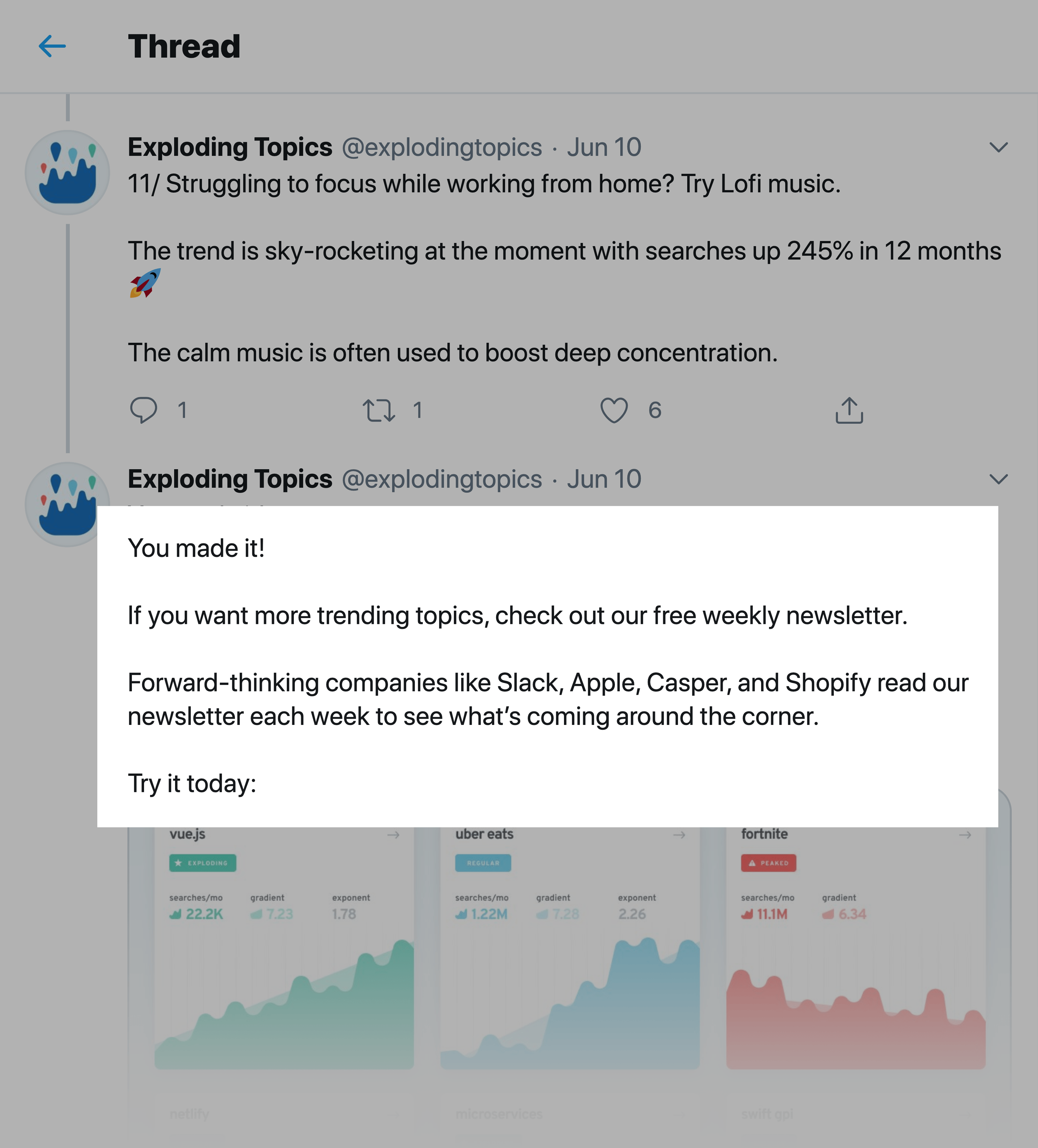
I do this all the time to get more email subscribers for my Exploding Topics email list. And it works really well.
First, create a social post that’s 100% pure value. It can be a video. A list of tips. Or anything else that works for the platform that you’re posting on.
For example, with Exploding Topics, we usually post an interesting Twitter thread.
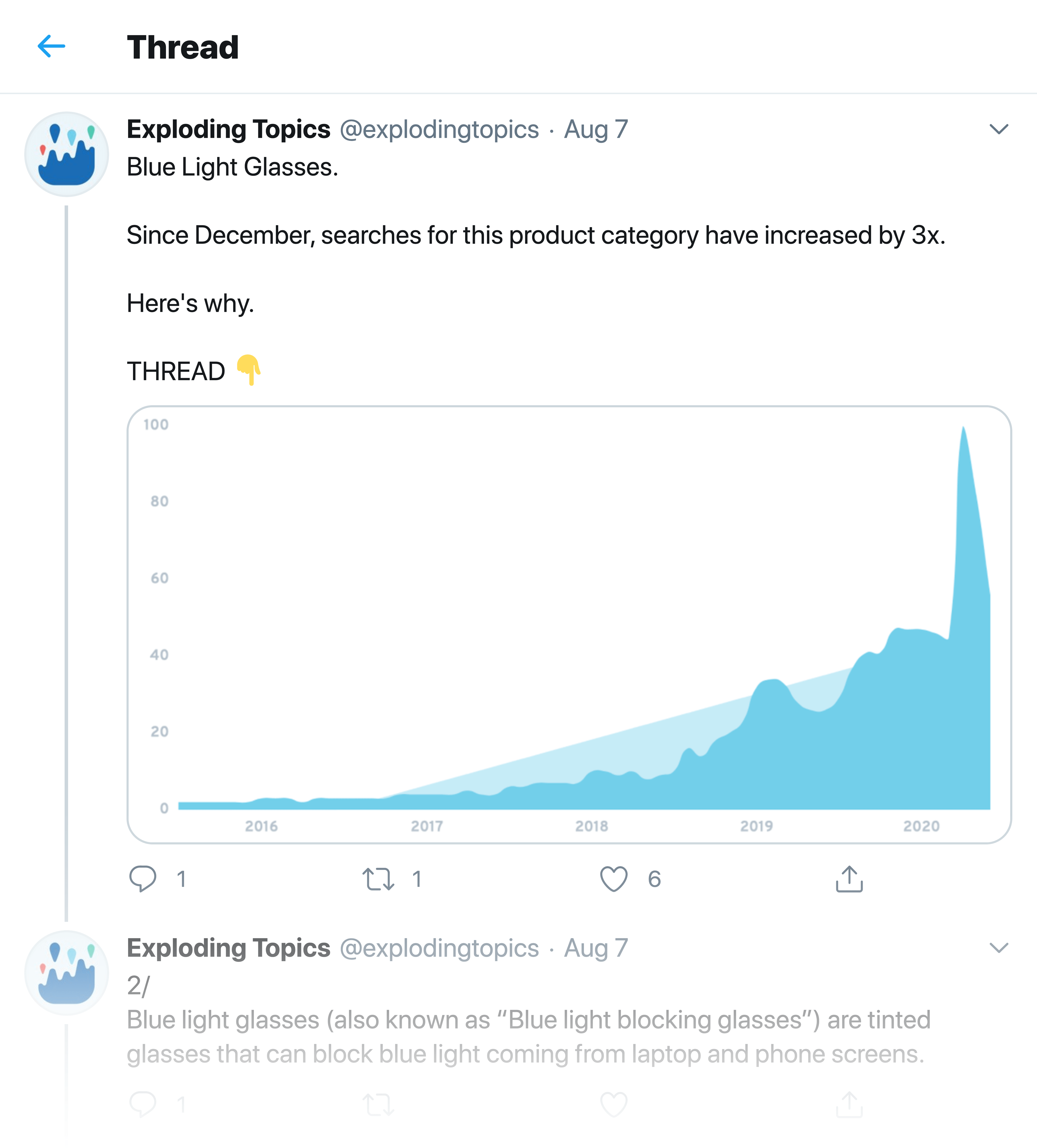
Then, pitch your newsletter as a way to get more of this same sort of valuable content.
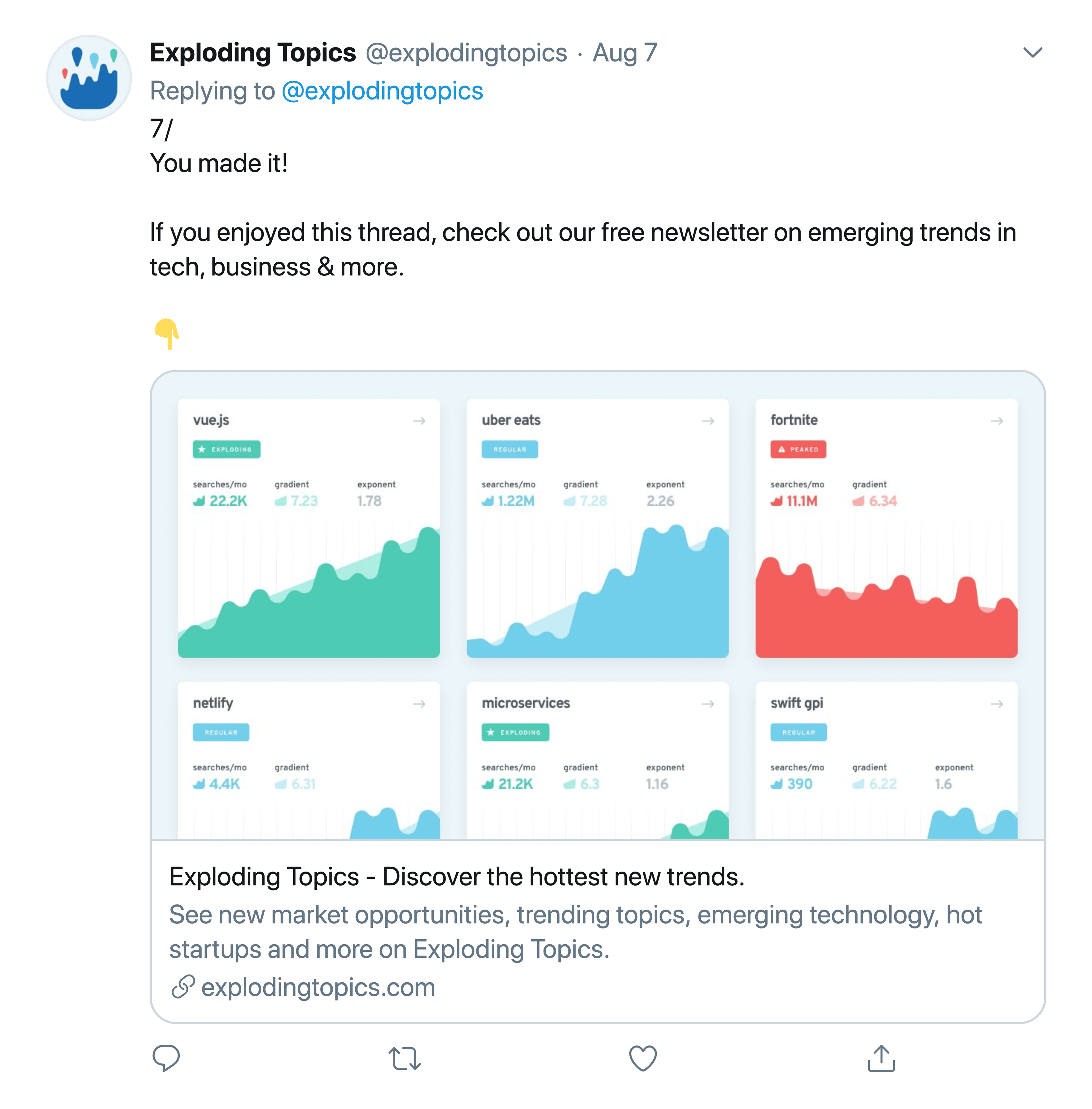
That way, you’re not pitching your newsletter out of the blue. It’s a natural extension of the content that you just posted.
3. Try Exit Intent Popups
Exit-intent popups have literally added 50k+ subscribers to my list.
Here’s an example of one of our exit-intent popups.

Yup, that popup is HUGE.
It takes up the entire screen.
Yet I’ve received essentially zero complaints about it.
Why?
Because I make 100% sure that it only triggers when someone’s leaving my site.
In other words: it doesn’t bug people that are currently reading something.
This may sound like a minor difference. But it’s actually a huge deal.
Unfortunately, exit-intent popups sometimes get lumped together with other “annoying” popups.
Even though, as I just showed you, they’re not annoying at all.
What you pitch here depends on the site that you run. If you run a blog, you want to offer up a tutorial video, case study or report.
And if you’re in eCommerce, your popup should be a discount for first-time customers.
4. Add Gated Content to Your Blog
Gated content is exclusive content that only email subscribers have access to.
Your gated content can be an exclusive interview. Video. Report. Checklist. Or anything else that would entice people to sign up for your list.
For example, in my case, we had a number of “Padlock Posts” listed on my blog feed.

These were exclusive articles that we only show to email subscribers. And they’ve been HUGE in increasing our email subscriber list.
Here’s exactly how to set this up:
First, create your first piece of gated content. Again, this can be anything that your audience would find valuable.
In my case, I went with an SEO case study because I knew that my site visitors would want to get their hands on it.
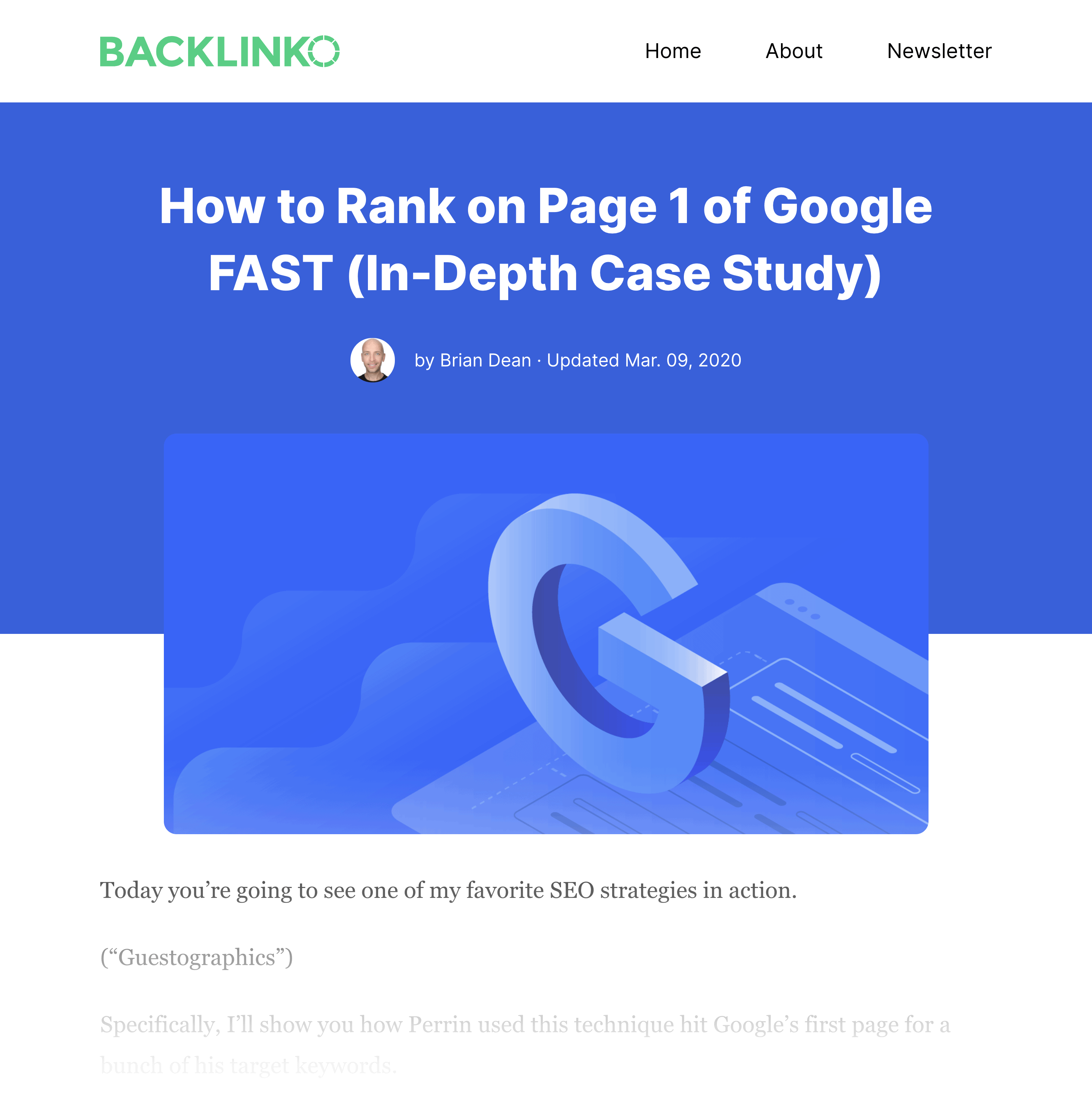
Then, create the actual content. In my case, I wrote a blog post like I normally would.
But instead of publishing it, I saved it as a draft in WordPress.
Finally, “lock” the content somehow. How you do this depends a lot on the CMS your site runs on. And the content itself.

In our case, we customized WordPress to show these padlock posts on the site’s blog feed. But that’s pretty complicated.
Fortunately, there are simple ways to accomplish essentially the same thing.
For example, let’s say that your gated content is a video. You can simply upload a video to YouTube. Mark it as “unlisted”. And give people that sign up the video URL.
Same story with a blog post. You can publish it. Set it to noindex (that way, Google and other search engines won’t index it). Then, send email subscribers a list to the page.
Simple.
5. Create a Dedicated Newsletter Sign Up Page
If you want people to sign up to your email list, you need a page on your site dedicated to that one goal.
(In other words, a squeeze page.)
For example, at Backlinko I have this newsletter sign-up page.

And I make sure to link to that page from my site’s navigation.

(More on that later.)
Your squeeze page doesn’t have to follow the same structure that I use here.
In fact, you should design your squeeze page to appeal to your specific target audience.
But in general, you just want to make sure that your page is SUPER focused on getting email opt-ins.
As you can see, my page doesn’t have any links to other pages on my site. Or anything that distracts people from signing up.

Which is one of the reasons that this page converts at about 10%.
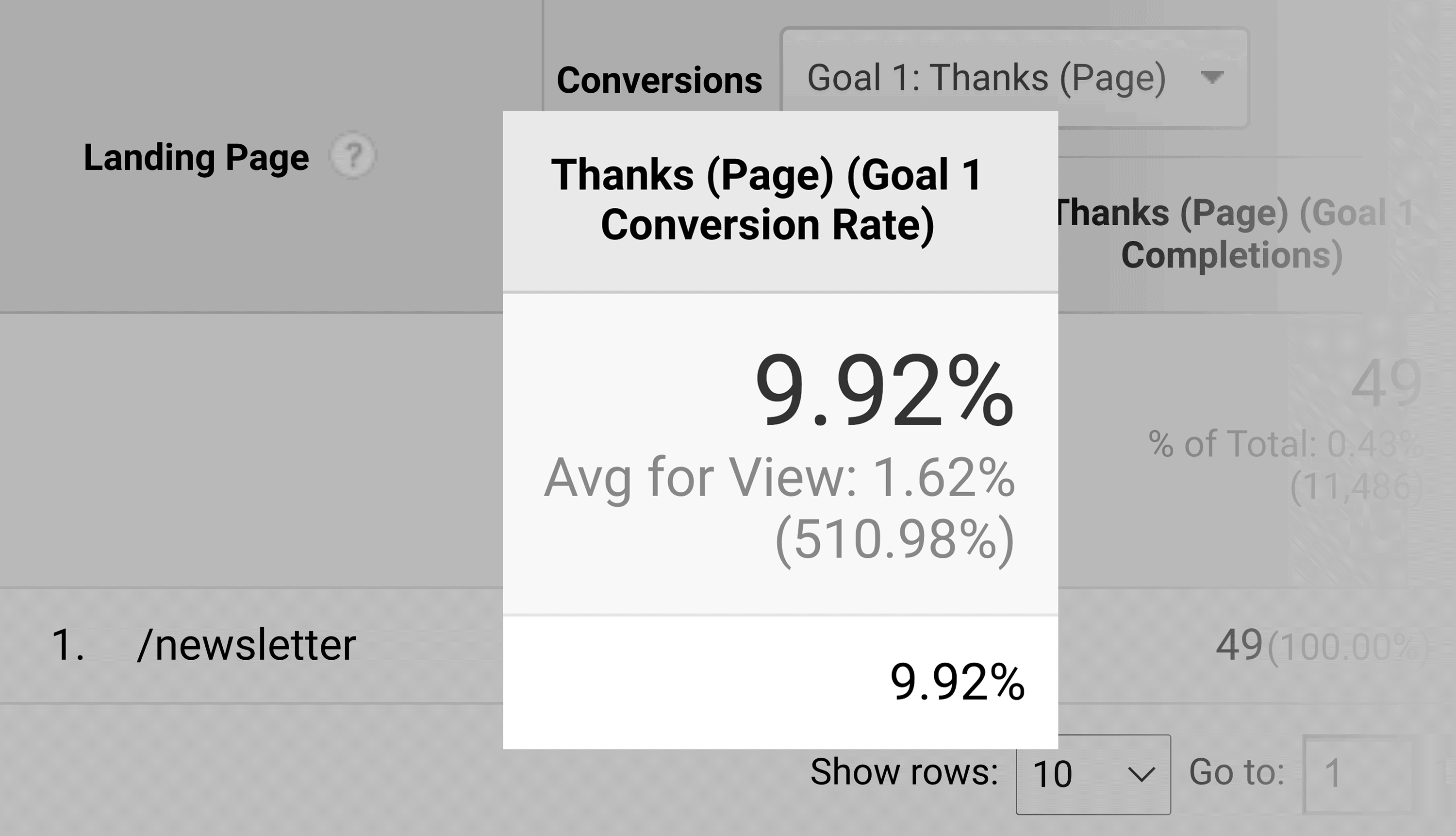
6. Split Test Your Landing Page
Your newsletter landing page is one of the most important pages on your entire website.
This is why you want to do whatever you can to improve that page’s conversion rate.
Specifically: A/B test different versions of your page.
Fortunately, this is super easy to do with Google Optimize.
All you need to do is create two versions of your page. And Google Optimize will randomly show users one version of the page.
For example, some time ago we split test two different versions of this squeeze page.
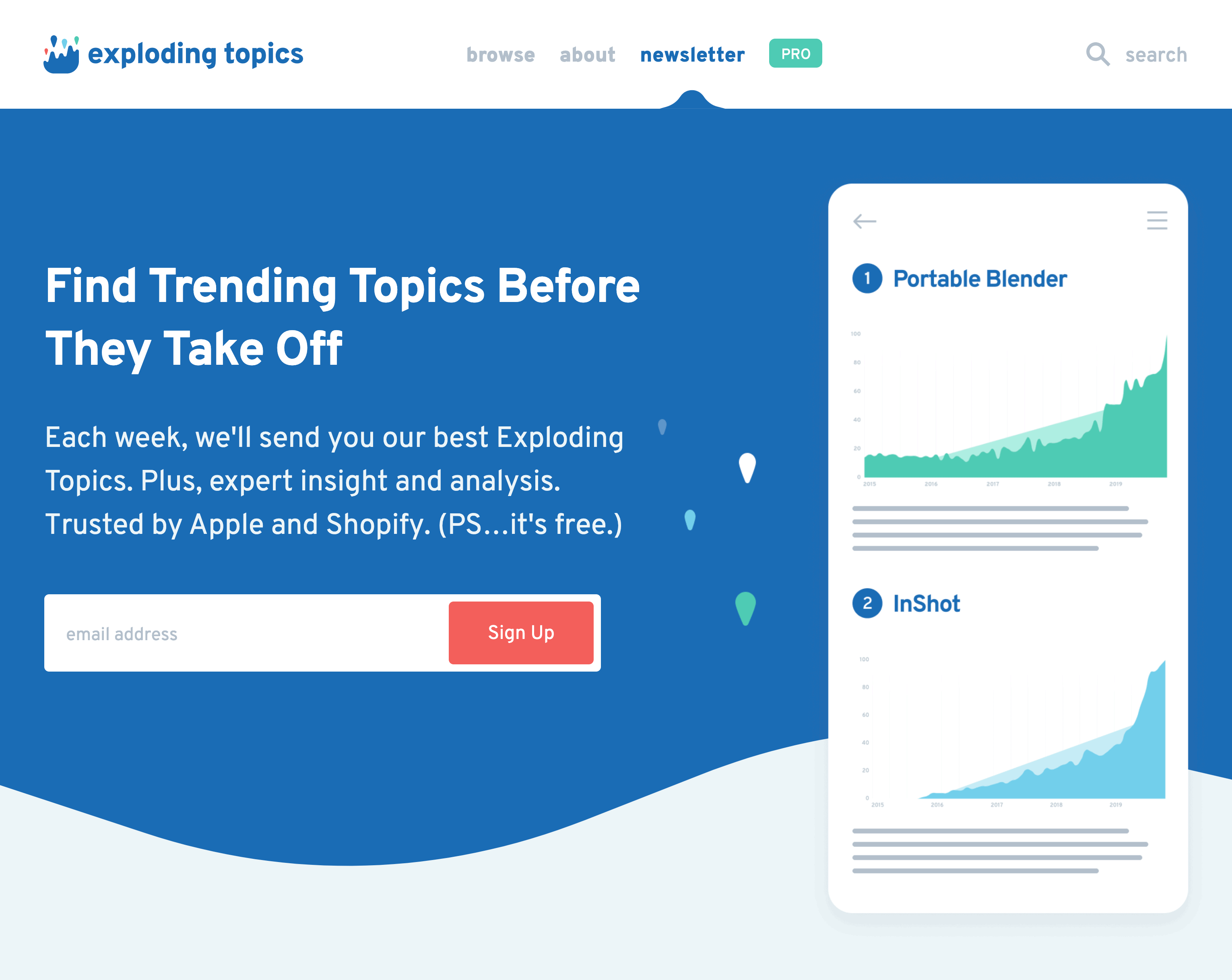
One page looked like the one you can see above.
And the other was a much longer version with a completely different copy.

(In fact, that’s one of the most important things to keep in mind about split testing: you don’t want to randomly test different button colors. Especially at first. Instead, split test VERY different pages. See which one works best. Then, split test minor changes on the winning page.)
Here’s an example of what your report will look like:

As you can see, the jury is still out on which page is best.
(It usually takes about two weeks for Google Optimize to crown a winner.)
But it does look like the longer page is going to boost our conversions by about 10%.
Not too shabby.
7. Pitch a Tangible Newsletter
What do I mean by “tangible newsletter”?
I’m talking about a newsletter that promises something specific.
I first learned about this approach from Tim Ferriss’s 5-Bullet Friday newsletter.

Notice how Tim’s pitch isn’t a vague promise like “get updates” or “exclusive content”,
Instead, you know exactly what you’re going to get before you sign up.
This is something I’ve incorporated into our “Exploding Topics Tuesday” newsletter.
We send people four trending companies and products each week. Plus some insight around why the topic is trending.

That specific promise pushes people to subscribe.
Plus, it helps improve our open rates too. Our subscribers know that they’re going to get four trends at 9am Eastern.
So when people see our newsletter pop into their inbox, they’re much more likely to open it.
(That newsletter has a 40%+ open rate.)
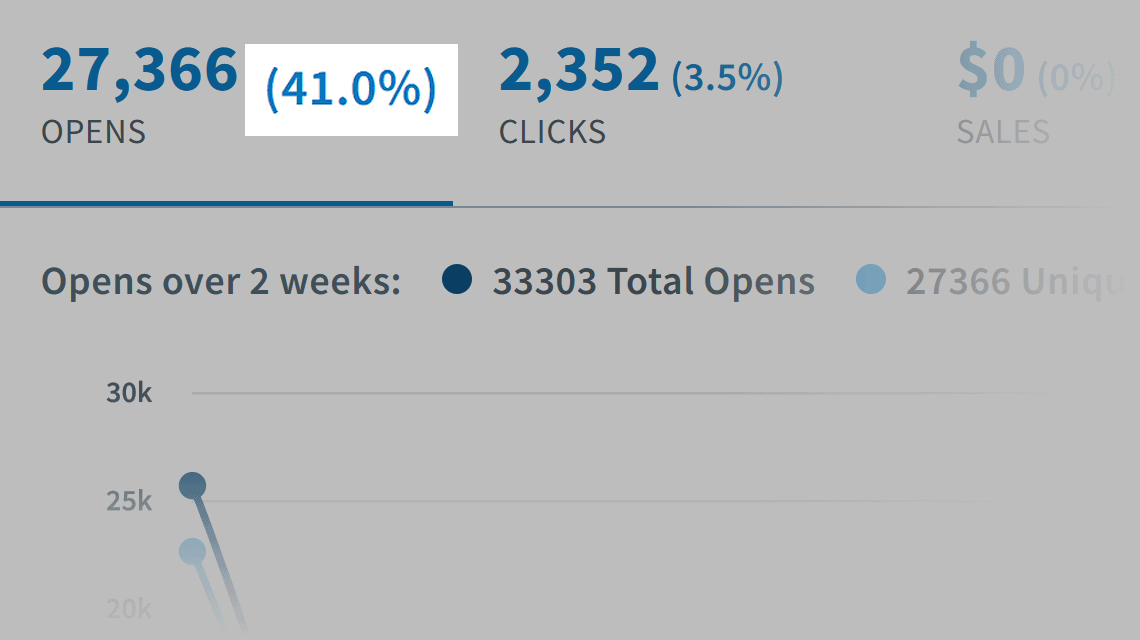
8. Use Social Proof
Social proof can help with ALL of your marketing.
But social proof is especially important for situations where you’re not sure what to do.
(Like when someone is deciding whether or not to sign up for an email newsletter.)
Now:
There are a few different ways you can use social proof to get more email subscribers.
First, you can boast about how many subscribers you have.
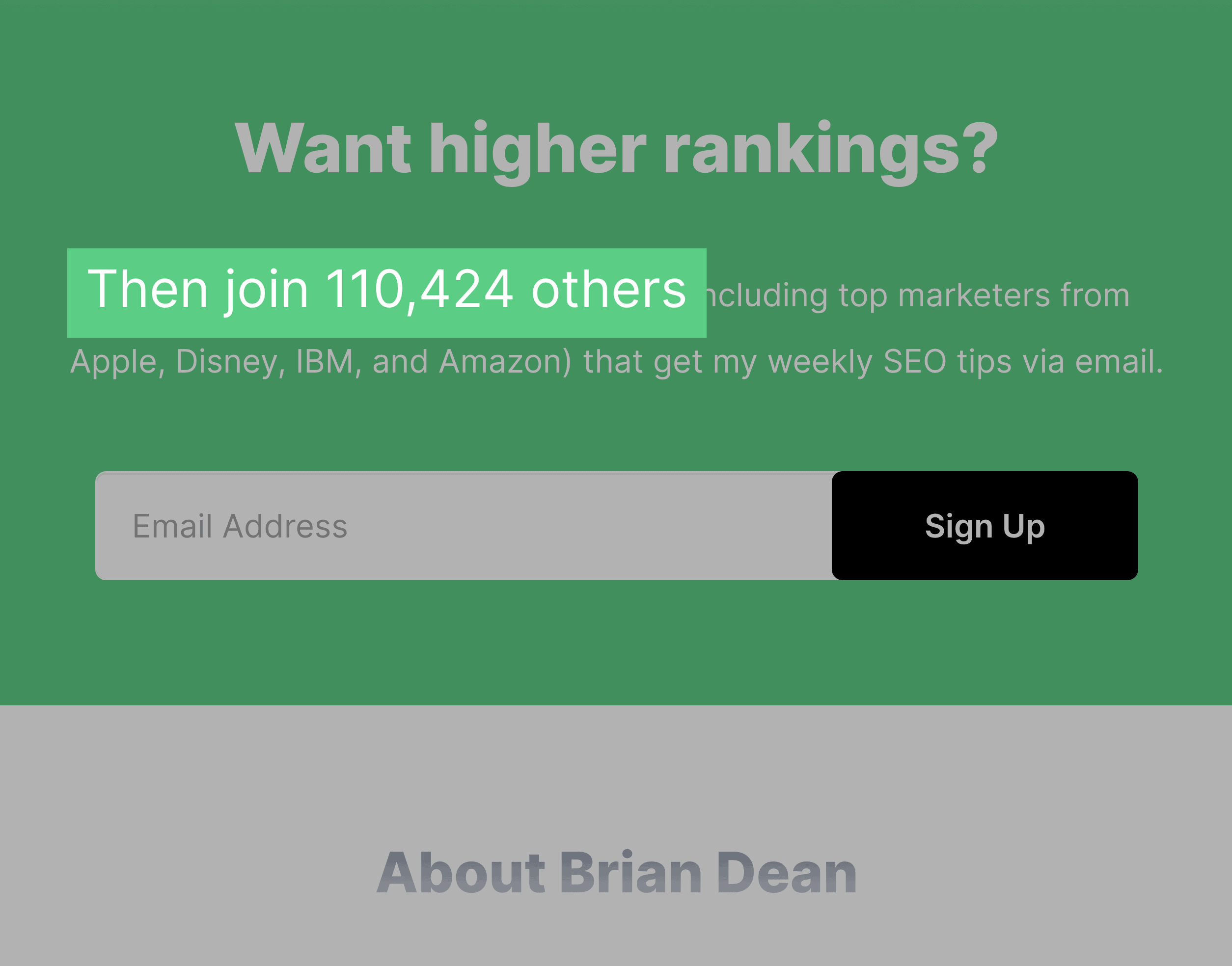
Second, you can highlight specific people or organizations that are on your list.
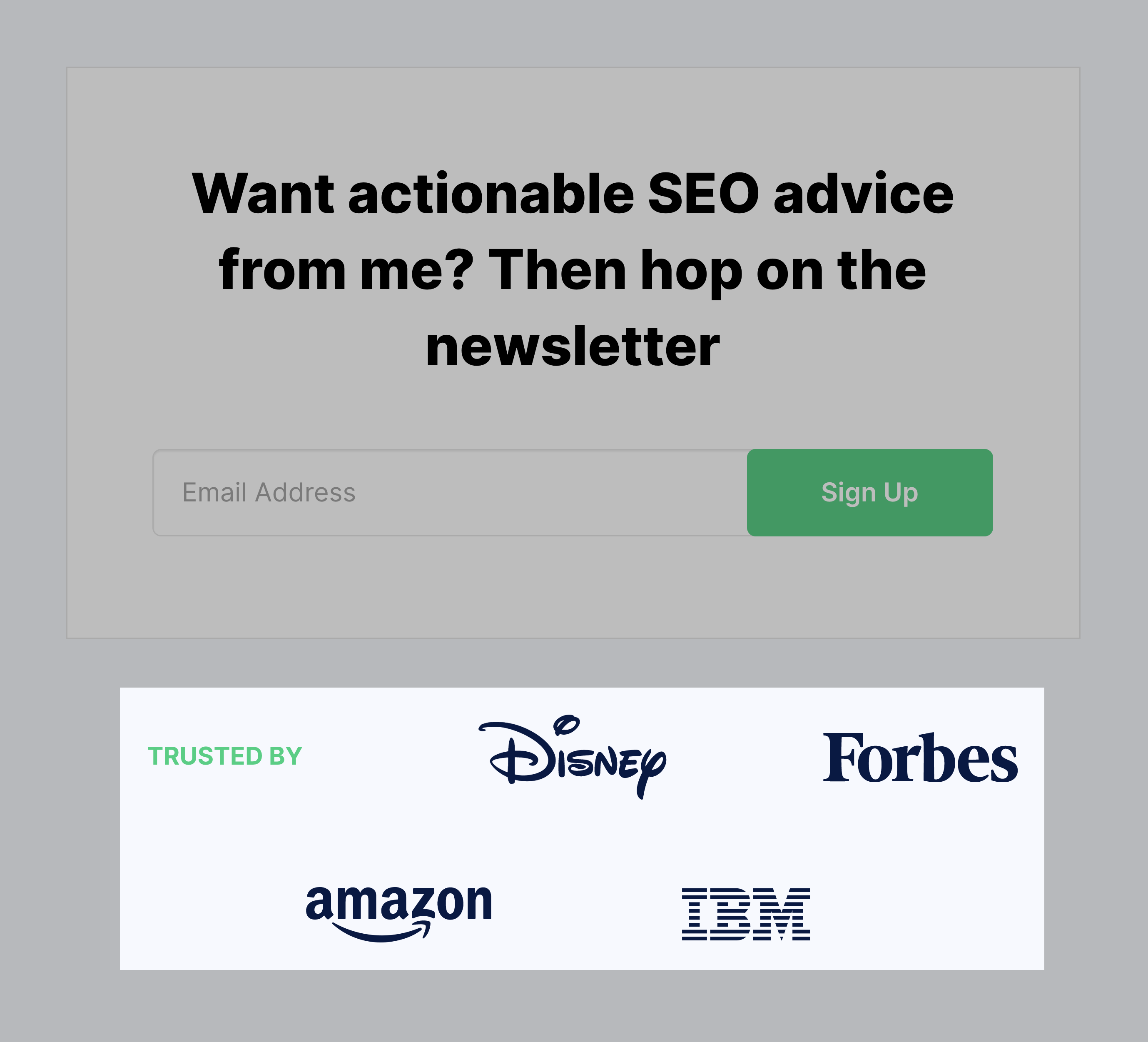
(With their permission of course. 🙂 )
Or you can feature a testimonial from one of your subscribers.
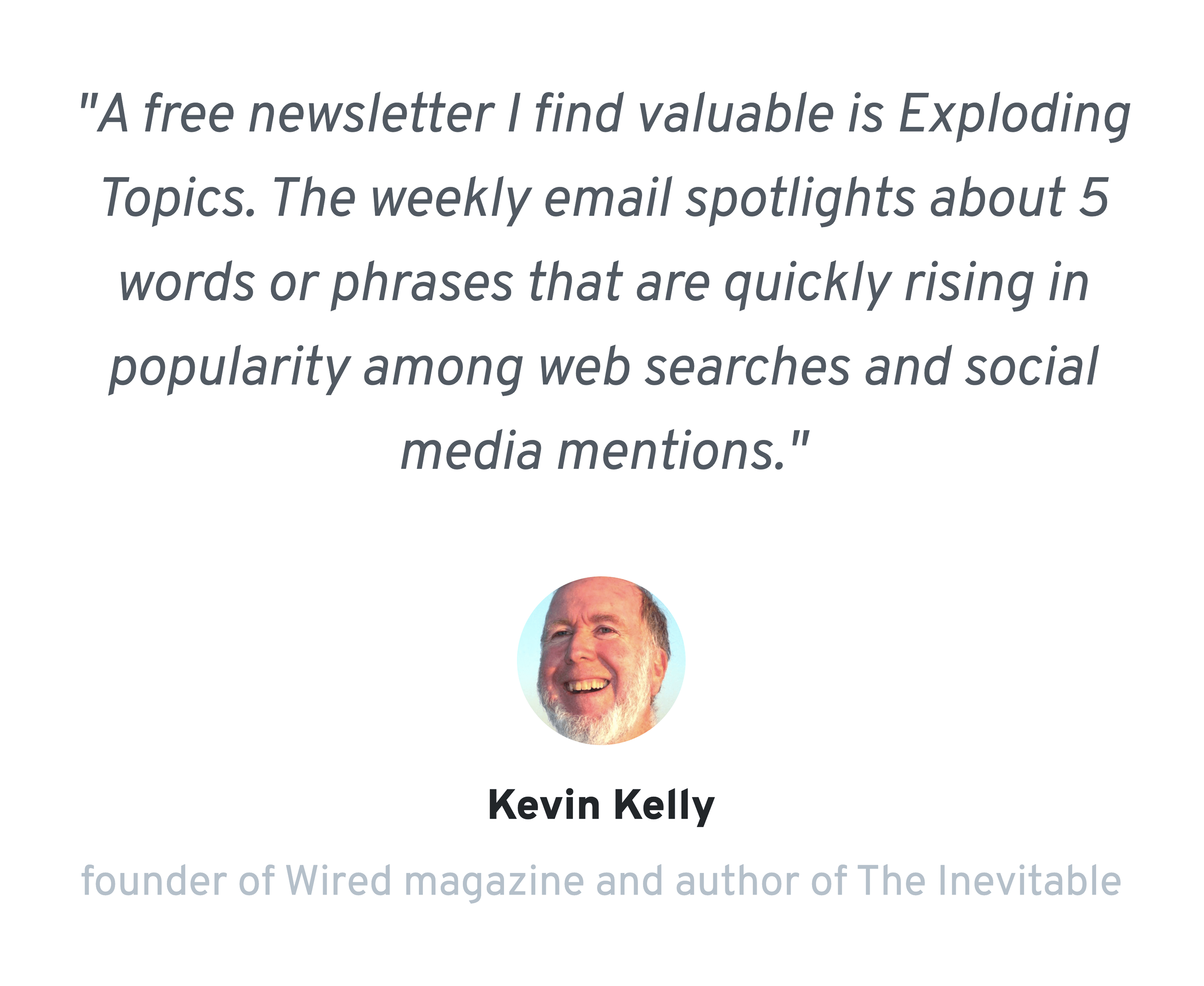
In my experience, all three approaches work equally well. So you should use whichever form of social proof makes the most sense for you.
9. Optimize Your Homepage For Conversions
Most homepages don’t convert well.
And I should know. For years my homepage looked like this:

This design made it easy for people to find my latest content. But it wasn’t optimized for email subscriptions.
This is why that page converted at about 2%.
Not good.
So I decided to test out a new homepage design. This time, I’d basically turn it into a traditional but effective landing page.

As you can see, this version is MUCH more focused on lead generation. It’s basically some social proof, a CTA, and a sign-up form.
This is why this new version of my homepage converts at nearly 6%.
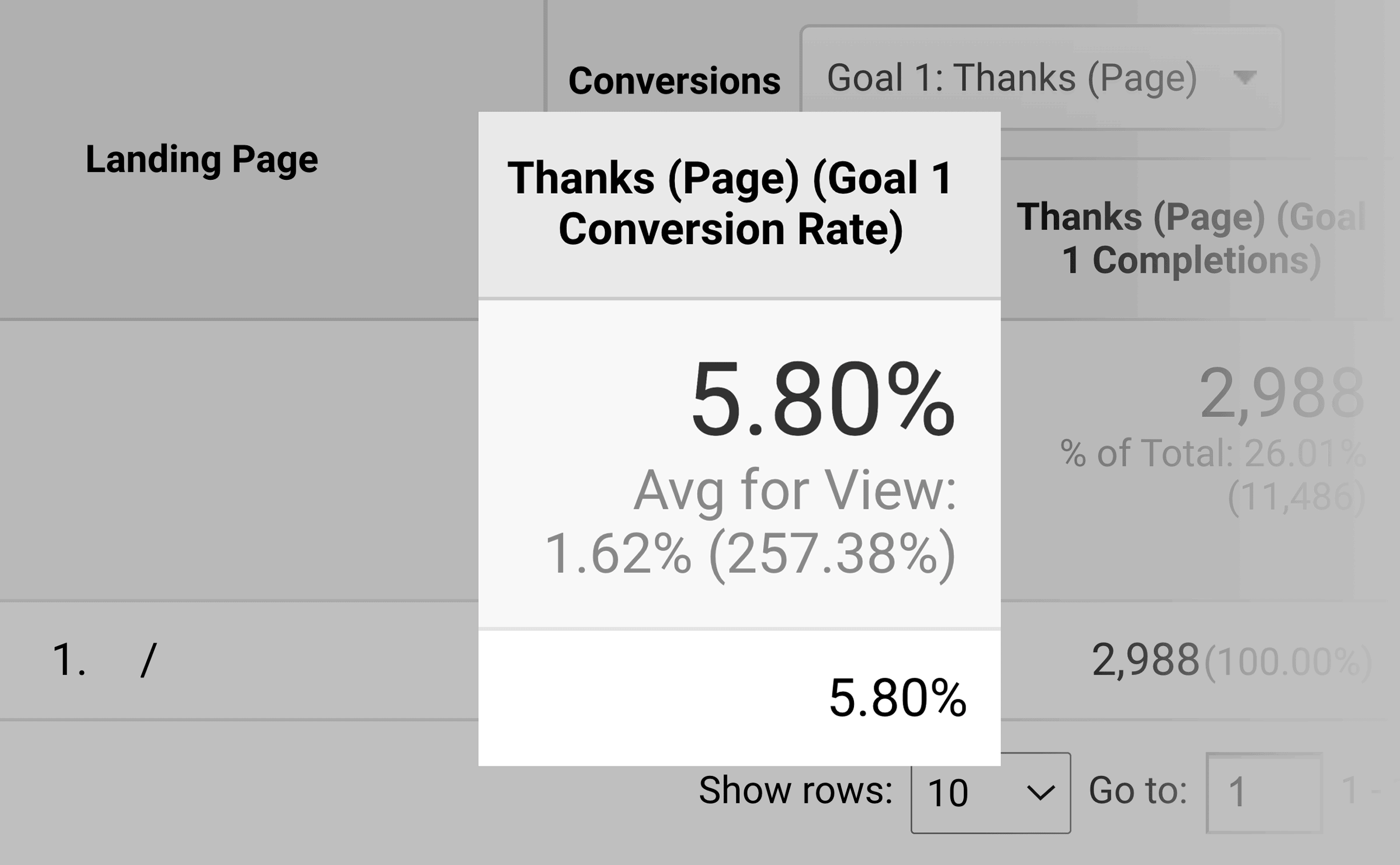
10. Improve Low-Converting Pages
Every site has a handful of pages that don’t convert well.
And when you improve the conversion rate on those pages, your entire site’s conversion rate can easily improve by 10%, 20%, or more.
Here’s how to do it.
First, login to Google Analytics.
In the sidebar, navigate to to “Explore” and create a new blank exploration.

From there, you’ll add these dimensions:
- Page path + query string (this will show your page URLs).
And for metrics:
- Event count (this tracks the number of conversion-related events).
- You can also add Event name to filter specific conversion events (like form submissions or purchases).

Now, drag Page path + query string into Rows and Event count into Values. If you want, you can filter by Event name to narrow it down to specific conversion events.

Once you’ve got it set up, go through the list and find pages that have way fewer events than the rest of your site.

In my case, this list of advanced SEO strategies converts significantly worse than most of the other pages on my site.
And when I looked at that page, I realized why:
There’s really no place for someone to sign up to my list from that page. I don’t have a lead magnet or Content Upgrade on the page.
And my exit-intent popup was turned off.
So all I need to do to get more conversions from that page is to activate my popup.
And I should be good to go.
11. Funnel Traffic to High-Converting Pages
This tip is super simple:
All you need to do is find pages on your site that convert well.

Then, funnel website visitors to those key pages.
In my case, my keyword tool page converts super well.
This is why I include a link to the tools in my navigation.
Bonus #1: Encourage Email Forwards
Your existing subscribers can be a GREAT source of new email signups.
That is when they forward your emails to their friends and colleagues.
Now:
This will happen naturally.
(Assuming that you send good stuff.)
But I’ve found that a little bit of encouragement can add fuel to the fire.
In fact, the Morning Brew newsletter actually has an entire referral program in place for this exact reason.

But you don’t need to necessarily start giving out mugs for this approach to work.
In fact, you can just gently remind people to forward your newsletter.
For example, here’s what we used to include at the bottom of each Exploding Topics newsletter.

(Right above the unsubscribe button.)
This sentence gently reminded existing subscribers to forward our emails.
Plus, that link makes it easy for people that got forwarded our email to subscribe.
Bonus #2: Cross Promote With Other Newsletters
Over the last year or so, I’ve done DOZENS of cross-promotions with other newsletters.
And these have added about 10k subscribers to my email list.
(In fact, I’d say that cross promotions are one of the most underrated email marketing strategies on the planet. No one is using this approach.)
Here’s how to do it.
First, find a newsletter that’s about your size. I recommend using Paved for this step.

This tool collects newsletters from all sorts of different industries. Along with stats, like subscriber count.
Paved is technically designed for newsletter sponsorships. But you can use it for cross-promotions too.
Then, reach out to the person that runs the newsletter. And make your pitch.
Finally, mention their newsletter in one of your sends. They’ll do the same.
And you’re set.
Backlinko is owned by Semrush. We’re still obsessed with bringing you world-class SEO insights, backed by hands-on experience. Unless otherwise noted, this content was written by either an employee or paid contractor of Semrush Inc.